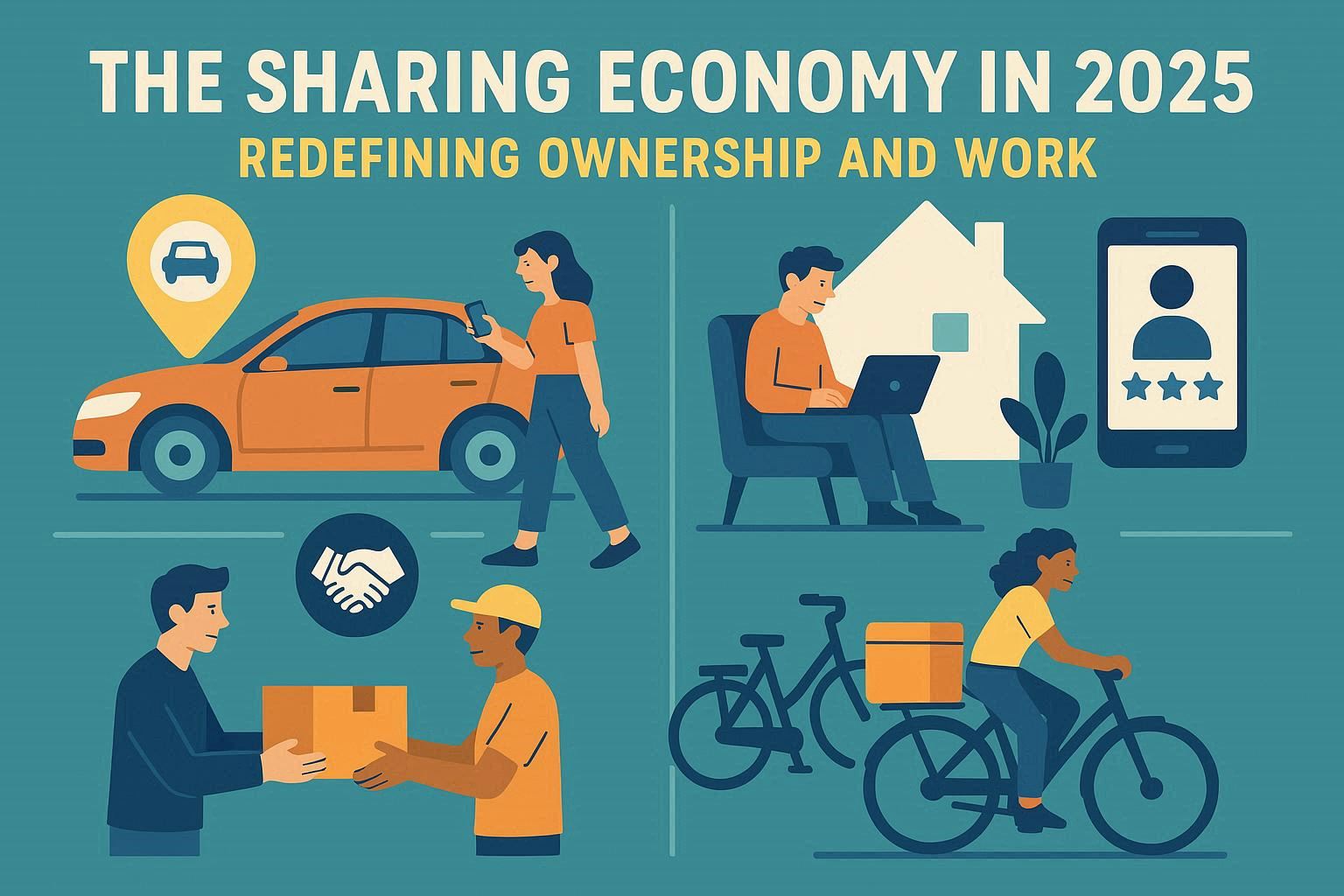The traditional idea of ownership is changing. From cars to apartments, people are increasingly renting, sharing, or accessing products instead of buying them outright. This shift, known as the sharing economy, has grown into a multi-trillion-dollar industry by 2025, reshaping how people work, consume, and interact with businesses.
This article explores the rise of the sharing economy, its economic impact, opportunities, challenges, and future outlook.
1. What Is the Sharing Economy?
The sharing economy is an economic model where individuals share access to goods and services, often through digital platforms. Examples include:
- Ride-sharing – Uber, Lyft, Bolt.
- Home-sharing – Airbnb, Vrbo.
- Freelance platforms – Fiverr, Upwork.
- Shared assets – Bike rentals, co-working spaces, peer-to-peer lending.
2. Economic Benefits of the Sharing Economy
- Affordable Access – Consumers save money by renting instead of buying.
- Income Opportunities – Workers earn money by offering services or assets.
- Efficient Resource Use – Sharing reduces waste and maximizes use of resources.
- Global Connectivity – Platforms connect providers and consumers worldwide.
3. The Gig Worker Revolution
The sharing economy has transformed labor markets. Millions of people now work as freelancers, drivers, or hosts. Key aspects include:
- Flexibility in working hours and location.
- Independence from traditional employers.
- Challenges like lack of job security, benefits, and pensions.
4. Technology and Innovation
The sharing economy thrives because of technology:
- Mobile apps make transactions seamless.
- AI helps match consumers with providers.
- Blockchain enhances trust in peer-to-peer exchanges.
- Smart contracts automate payments and agreements.
5. Challenges of the Sharing Economy
Despite growth, the sharing economy faces challenges:
- Regulation – Governments struggle to regulate platforms fairly.
- Worker Rights – Gig workers often lack healthcare, pensions, and protection.
- Market Saturation – Increased competition lowers earnings for providers.
- Trust and Safety – Ensuring security in peer-to-peer exchanges is critical.
6. Environmental and Social Impact
- Reduced carbon footprint through carpooling and shared transport.
- Better use of housing resources through short-term rentals.
- Social inclusion by giving people global income opportunities.
7. The Future of the Sharing Economy
By 2030, the sharing economy will likely expand further:
- Growth in green sharing models like renewable energy sharing.
- Rise of decentralized platforms using blockchain.
- Expansion into healthcare, education, and finance.
- Closer collaboration between governments and platforms to protect workers.
Conclusion
The sharing economy is more than a trend—it is a transformation of how people live, work, and consume. While challenges remain in regulation and worker protection, the opportunities for affordability, sustainability, and global connection are immense. Businesses that embrace this model will remain competitive in the evolving digital economy.

